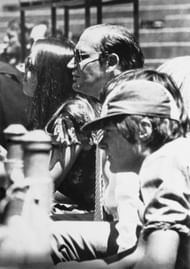Never one to give up, Packer leased the VFL Park in Melbourne and Football Park in Adelaide (Australian Rules football stadiums), the Gloucester Park in Perth (a harness racing course) and the Moore Park in Sydney, which till then had been used for the Royal Easter Show.
None of these places even remotely resembled a cricket pitch, and to prepare proper pitches there in such a short span of time was well nigh impossible.
The ACB secretly sniggered, only to find out that Packer had wooed away one of their own into making this seemingly impossible task possible.
That person was the genius John Maley, the curator of the Gabba, who figured out that pitches could be grown into hothouses outside the venues and then air-dropped on the actual playing surface. A task, which should have taken several weeks and possibly months, was completed in a matter of days.
The first game of the WSC began at VFL Park on the 2nd of December between the Australians and the World team. It would have been more appropriate to call it a West Indian team though, considering the fact that all of the players were just that.
The possibility of earning more in a season than they could in an entire career had made an entire contingent from the Caribbean sign up – a pleasant, but nevertheless unexpected surprise for Packer, who later went on to launch a full-fledged West Indian team alongside the Australian and World teams.
The Australian cricket public, however, preferred to watch a weaker Australian national team battle it out with India at Brisbane, and a seating capacity of close to 80,000 at the Packer grounds accentuated the emptiness. The ACB had won the first round.
But then, WSC was not just cricket – it was supposed to be entertainment derived from gladiatorial combat. The marketing team tried to emphasise the same by heavily promoting the likes of Imran Khan, Dennis Lillee, Michael Holding and Andy Roberts.
The new pitches behaved more often than not as new pitches are supposed to, and things came to a head when David Hookes was felled by a crushing bouncer from Andy Roberts. Hookes’s broken jaw not only stood up as a legitimate emblem of WSC’s intensity, but also as an ironic memory 27 years later, when another punch to the jaw by a bouncer – this time a person – felled him to the pavement and led to his unfortunate death.
Hookes’s injury had other batsmen running for cover, quite literally. Dennis Amiss got a motorcycle mechanic to develop a customised helmet for him, replete with visor, which could handle the fast bowlers’ thunderbolts as well as a shotgun to the head (more about it here).
Others followed suit, and in the next couple of years, almost all cricketers at international level were wearing some form of protective equipment or the other.
The ACB though had pulled off a masterstroke by appointing the highly popular 41-year-old Bobby Simpson as the captain of the Australian team, where the only other known face was Jeff Thomson whose existing binding agreement with a radio station to play for Queensland came in his way to play World Series Cricket.
The Indian team of the time was also not the greatest, and two weak teams made for close matches. The final match was a decider which Australia won to grab the series 3-2. Big crowds attended all the matches, which had excellent media coverage.
In contrast, Packer was seen counting the number of cars at some of his matches. And yet, he still had one last glimmer of hope.
Follow IPL Auction 2025 Live Updates, News & Biddings at Sportskeeda. Get the fastest updates on Mega-Auction and cricket news

